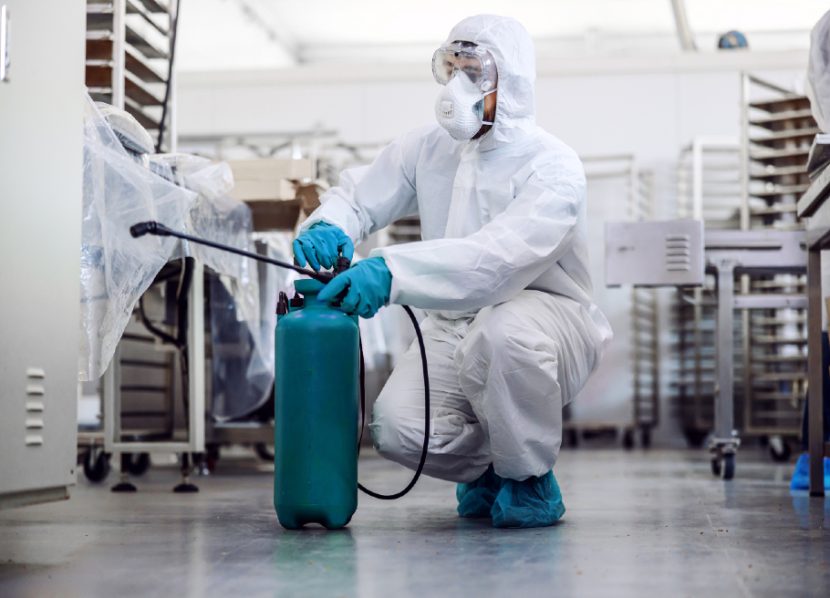Sanitation Excellence: Proven Tips for Impactful Food Safety Programs
By Sean Berdan
Once, not so long ago, the primary aim of a sanitation program was to prevent a facility from emitting unpleasant odours. Facilities often harboured growth in dark corners, leading to employee complaints, diminished morale and productivity, and increased accidents due to poor equipment and floor conditions. Cleaning was viewed as a “necessary evil,” carried out weekly to mitigate these negative trends. However, the times have drastically changed.
In the modern era, food processors operate on a global scale. Oversight is extensive and multi-layered, encompassing regional, provincial/state, and federal regulations, as well as audits by entities like the British Retail Consortium (BRC), Safe Quality Food (SQF), and the Global Food Safety Initiative (GFSI). These regulatory requirements can sometimes be conflicting and are often in flux.
Today, sanitation’s importance in the food industry is well-recognized, underscored by frequent news reports about Listeria monocytogenes and Salmonella outbreaks and product recalls. Recent outbreaks include lettuce, bagged salads, meat, ice cream, fruits and vegetables. The current headline grabber is a Salmonella outbreak in fresh cantaloupe. As of December 15, 2023, the CDC reports 302 illnesses, 129 hospitalizations, and four deaths. In Canada as of December 22, 2023, the Public Health Agency is reporting similar numbers with 164 illnesses, 61 hospitalized, and seven deaths. The implicated plant has been temporarily closed, and Mexican Health officials have taken samples from surfaces and water throughout the facility. From this, it can be gleaned that unsanitary conditions are likely the source of the contamination, and due to the textured surface of the cantaloupe and the distance of travel for the fruit to get to market, the time for growth was optimal to create this outbreak.
Don’t be afraid to seek assistance, and when your sanitation team delivers results, recognize the accomplishment.
The basic framework of any robust sanitation program centers around knowing your soil(s), choosing the right chemicals, having documented SSOPs that follow the dedicated steps of sanitation, a Master Sanitation Schedule (MSS) or non-production areas, and a Periodic Infrastructure/Equipment Cleaning (PIC/PEC) program for deeper cleaning, along with documented validation of the program in action.
While this meets regulatory guidance, enhancing the program with a few additional measures can significantly bolster its effectiveness:
Cultivating a Food Safety-First Culture: This starts at the top with the CEO and must include all employees. Too often, production goals are prioritized over the quality and safety of the product. The failure to realize that the consequences of a market withdrawal or recall are far more damaging to the bottom line than the costs associated with your sanitation program. All departments must work together to maintain sanitary conditions. After all, sanitation is performed to allow production to run, not to clean up after production.
Setting Realistic Standards: Understanding your product, the facility’s age, the equipment, the Critical Control Points (CCPs), and the expertise in your workforce will help you set achievable goals. If your targets are unattainable, your program is doomed to fail.
Developing Clear SSOPs: These should be easy to follow and incorporate a step-by-step approach. Use precise language and pictures to communicate the process. Be specific, but don’t get overly technical. Engage employees for input, ensuring that each step of the SSOP can be followed as written. Audit against the SSOP to verify that it will deliver safe, repeatable results against the standards set in your program.
Comprehensive Training: All employees, from the plant manager to the janitor, should be well-versed in Good Manufacturing Practices (GMPs) and the basics of the sanitation process. The best training programs blend classroom with hands-on training and explain the “why” and “how” of the sanitation program. Cross-train as many people throughout the organization as you can to give them a clear understanding of what happens during the sanitation cycle. At a minimum, annual training is required. Work in monthly, 20-minute sessions on specific topics related to recent issues at the facility or current news in the industry. Then, add a 2-5 minute Toolbox Talk weekly to keep employees thinking about good sanitation practices.
Utilizing External Resources: Chemical suppliers have microbiologists and specialists that they can deploy to assist with issues. Other resources include equipment manufacturers, food industry associations, and sanitation certification bodies. Reach out to colleagues at other companies as they can likely provide valuable insights into common issues.
Celebrate success: Companies quickly praise a new record day or a week with zero unplanned downtime. The same needs to happen with and for sanitation programs.
Create a quality sanitation culture. Set realistic standards for your product, facility, and team. SSOPs and training should be specific and deliver safe, repeatable results. Don’t be afraid to seek assistance, and when your sanitation team delivers results, recognize the accomplishment.
There are always more ways to strengthen sanitation programs, like sanitary design training, enhanced environmental programs and automation. However, incorporating these few tips into your sanitation program strategy will strengthen and enhance your program and boost the positive results.
About the Author:
Sean Berdan is an accomplished professional with extensive experience in the food industry. With a career stretching 30+ years, he has honed his expertise in food production, quality assurance and sanitation. Sean has worked in several sectors of food production, opening his own consulting business and creating content and teaching at the Craig Richardson Institute of Food Processing Technology at Conestoga College. A graduate of Western University, Sean is known for his love of hockey, coaching in youth programs for over 30 years and holds certifications in Leadership, HACCP, SQF and PCQI.

-
 FeaturedRisk management
The Cost of a Breach: What a Cyberattack Could Mean for Food Safety Recalls
FeaturedRisk management
The Cost of a Breach: What a Cyberattack Could Mean for Food Safety Recalls
-
 FeaturedRisk management
Securing the Food Chain: How ISO/IEC 27001 Strengthens Cybersecurity
FeaturedRisk management
Securing the Food Chain: How ISO/IEC 27001 Strengthens Cybersecurity
-
 FeaturedRisk management
Revolutionizing Food Safety Training: Breaking Out of the “Check-the-Box” Mentality
FeaturedRisk management
Revolutionizing Food Safety Training: Breaking Out of the “Check-the-Box” Mentality
-
 GFSI Standards
GFSI 2025: Building Trust, Tech-Forward Solutions, and Global Unity in Food Safety
GFSI Standards
GFSI 2025: Building Trust, Tech-Forward Solutions, and Global Unity in Food Safety
-
 FeaturedFood Safety
Integrated Pest Management: Strategies to Protect Your Brand’s Reputation
FeaturedFood Safety
Integrated Pest Management: Strategies to Protect Your Brand’s Reputation
-
 FeaturedFood Safety Culture & Training
No Open Door Policy: Challenges That Impact Pest Control in Food Processing Plants
FeaturedFood Safety Culture & Training
No Open Door Policy: Challenges That Impact Pest Control in Food Processing Plants




